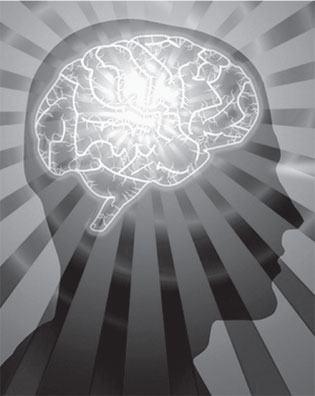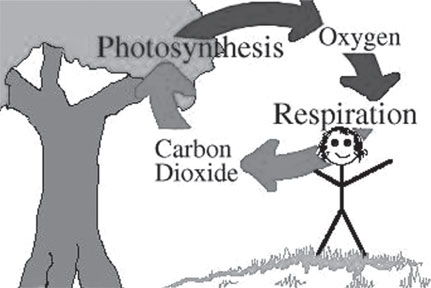|

Framework to prioritise action on global mental health
For mental health to gain significant attention, and funding from
policymakers globally, it is not enough to convince people that it has a
high disease burden but also that there are deliverable and
cost-effective interventions - according to South African researchers
writing in PLoS Medicine.
 Worldwide,
the lifetime prevalence of mental disorders is between 12% and 49%, with
over 70% of this burden in low- and middle-income countries. Despite
this, mental illness has not received appropriate visibility, policy
attention, or funding. Furthermore, 44% of African countries do not even
have a mental health policy, and 33% do not have a mental health plan.
Yet even in rich countries, when health budgets are cut, quite often the
first area to be cut is mental health. In the United States, US$
2,100,000,000 has been cut from mental health budgets over the past
three years, and further cuts are expected for 2012. Worldwide,
the lifetime prevalence of mental disorders is between 12% and 49%, with
over 70% of this burden in low- and middle-income countries. Despite
this, mental illness has not received appropriate visibility, policy
attention, or funding. Furthermore, 44% of African countries do not even
have a mental health policy, and 33% do not have a mental health plan.
Yet even in rich countries, when health budgets are cut, quite often the
first area to be cut is mental health. In the United States, US$
2,100,000,000 has been cut from mental health budgets over the past
three years, and further cuts are expected for 2012.
Mark Tomlinson and Crick Lund from the Department of Psychiatry and
Mental Health argue that global mental health must demonstrate its
social and economic impact.
The authors argue: "a coherent evidence base for scalable
interventions that can be shown to have an impact at the structural
level - on economic development and human well-being - is central. This
is the language of most policy makers." Tomlinson and Lund discuss a
framework to help understand why some global health initiatives are more
successful in generating funding and political priority than others and
argue that a health issue gains political priority when three conditions
are met: country political leaders and international leaders publicly
and privately express support for the issue, and do so in a sustained
fashion; policies are enacted to address the problem; and resources
appropriate to the disease burden are allocated to the issue.
However, the authors say: "In the case of mental health, none of
these conditions is currently being met in a substantial way."
"Greater community cohesion and international governance structures
need to be developed to contribute to a more unified voice regarding
global mental health.
International organisations such as the World Health Organisation,
the World Federation for Mental Health, and the Movement for Global
Mental Health, as well as national organisations, need to become a
united force, for example, through a unified organisational network that
delivers clear, consistent, and well-timed messages for policy and
public consumption. "
Medicalxpress
Oxygen and light in synthesis of anti-malaria drug
The most effective anti-malaria drug can now be produced
inexpensively and in large quantities. This means that it will be
possible to provide medication for the 225 million malaria patients in
developing countries at an affordable price. Researchers have developed
a very simple process for the synthesis of artemisinin, the active
ingredient that pharmaceutical companies could only obtain from plants
up to now.
 The
chemists use a waste product from current artemisinin production as
their starting substance. This substance can also be produced
biotechnologically in yeast, which the scientists convert into the
active ingredient using a simple yet very ingenious method. The
chemists use a waste product from current artemisinin production as
their starting substance. This substance can also be produced
biotechnologically in yeast, which the scientists convert into the
active ingredient using a simple yet very ingenious method.
There is an effective treatment against malaria, but it is not
accessible to all of the more than 200 million people worldwide who are
affected by the disease. Millions, especially in the developing world,
cannot afford the combination drug preparation, which consists mainly of
artemisinin.
Moreover, the price for the medication varies, as this substance is
isolated from sweet wormwood (Artemisia annua) which grows mainly in
China and Vietnam, and varies seasonally in its availability.
To make the drug affordable for at least some patients in developing
countries, the Clinton Foundation, for example, subsidises its cost to
the tune of several million dollars per year. Nevertheless, over one
million people die of malaria each year because they do not have access
to effective drugs.
This may be about to change. Peter H. Seeberger, Professor of
Chemistry at the Freie Universität Berlin and his colleague François
Lévesque have discovered a very simple way of synthesising the
artemisinin molecule, which is known as an anti-malaria drug from
traditional Chinese medicine and has an extremely complex chemical
structure. "The production of the drug is therefore no longer dependent
on obtaining the active ingredient from plants," says Peter Seeberger.
Synthesis
As a starting point, the chemists use artemisinic acid - a substance
produced as a hitherto unused by-product from the isolation of
artemisinin from sweet wormwood, which is produced in volumes ten times
greater than the active ingredient itself.
Moreover, artemisinic acid can easily be produced in genetically
modified yeast as it has a much simpler structure. "We convert the
artemisinic acid into artemisinin in a single step," says Peter
Seeberger. "And we have developed a simple apparatus for this process,
which enables the production of large volumes of the substance under
very controlled conditions."
The only reaction sequence known up to now required several steps,
following each of which the intermediate products had to be isolated
laboriously - a method that was far too expensive to offer as a viable
alternative to the production of the drug from plants.
The striking simplification of artemisinin synthesis required not
only a keen sense for an elegant combination of the correct partial
reactions to enable the process to take place in a single step; it also
took a degree of courage, as the chemists departed from the paths
typically taken by industry up to now.
Molecule
The effect of the molecule, which not only targets malaria but
possibly also other infections and even breast cancer, is due to, among
other things, a very reactive chemical group formed by two neighbouring
oxygen atoms - which chemists refer to as an endoperoxide. Peter
Seeberger and François Lévesque use photochemistry to incorporate this
structural element into the artemisinic acid. Ultraviolet light converts
oxygen into a form that can react with molecules to form peroxides.
"Photochemistry is a simple and cost-effective method. However, the
pharmaceutical industry has not used it to date because it was so
difficult to control and implement on a large scale," explains Peter
Seeberger. In the large reaction vessels with which industrial
manufacturers work, flashes of light do not penetrate deeply enough from
outside and the reactive form of oxygen is not produced in sufficient
volumes.
The Potsdam-based scientists have succeeded in resolving this problem
using an ingenious trick: They channel the reaction mixture containing
all of the required ingredients through a thin tube that they have
wrapped around a UV lamp.
In this structure, the light penetrates the entire reaction medium
and triggers the chemical conversion process with optimum efficiency.
"The fact that we do not carry out the synthesis as a one-pot reaction
in a single vessel, but in a continuous-flow reactor enables us to
define the reaction conditions down to the last detail," explains Peter
Seeberger.
After just four-and-a- half minutes a solution flows out of the tube,
in which 40 percent of the artemisinic acid has become artemisinin.
Photoreactors
"We assume that 800 of our simple photoreactors would suffice to
cover the global requirement for artemisinin," said Peter Seeberger. And
it could all happen very quickly. Peter Seeberger estimates that the
innovative synthesis process could be ready for technical use in a
matter of six months. This would alleviate the global shortage of
artemisinin and exert considerable downward pressure on the price of the
associated drugs.
- MNT
Even mild dehydration affects our moods
Most people only think about drinking water when they are thirsty;
but by then it may already be too late.
Even mild dehydration can alter a person's mood, energy level, and
ability to think clearly, according to two studies recently conducted at
the University of Connecticut's Human Performance Laboratory.
 |
|
Drink 2 litres of water
a day |
The tests showed that it didn't matter if a person had just walked
for 40 minutes on a treadmill or was sitting at rest - the adverse
effects from mild dehydration were the same. Mild dehydration is defined
as an approximately 1.5 percent loss in normal water volume in the body.
The test results affirm the importance of staying properly hydrated
at all times and not just during exercise, extreme heat, or exertion,
said Lawrence E. Armstrong, one of the studies' lead scientists and a
professor of physiology in UConn's Department of Kinesiology in the Neag
School of Education.
"Our thirst sensation doesn't really appear until we are 1 percent or
2 percent dehydrated. By then dehydration is already setting in and
starting to impact how our mind and body perform," said Armstrong, an
international expert on hydration who has conducted research in the
field for more than 20 years.
"Dehydration affects all people, and staying properly hydrated is
just as important for those who work all day at a computer as it is for
marathon runners, who can lose up to 8 percent of their body weight as
water when they compete."
Separate groups of young women and men were tested. Twenty-five women
took part in one study. Their average age was 23.
The men's group consisted of 26 men with an average age of 20.
All of the participants were healthy, active individuals, who were
neither high-performance athletes nor sedentary - typically exercising
for 30 to 60 minutes per day.
Each participant took part in three evaluations that were separated
by 28 days. All participants walked on a treadmill to induce
dehydration, and all of the subjects were hydrated the evening before
the evaluations commenced. As part of the evaluation, the subjects were
put through a battery of cognitive tests that measured vigilance,
concentration, reaction time, learning, memory, and reasoning. The
results were compared against a separate series of tests when the
individuals were not dehydrated.
In the tests involving the young women, mild dehydration caused
headaches, fatigue, and difficulty concentrating, according to one of
the studies, which appeared in the February issue of The Journal of
Nutrition. The female subjects also perceived tasks as more difficult
when slightly dehydrated, although there was no substantive reduction in
their cognitive abilities.
In the tests involving the young men, mild dehydration caused some
difficulty with mental tasks, particularly in the areas of vigilance and
working memory, according to the results of the second UConn study.
While the young men also experienced fatigue, tension, and anxiety
when mildly dehydrated, adverse changes in mood and symptoms were
"substantially greater in females than in males, both at rest and during
exercise," according to the study. The men's study was published in the
British Journal of Nutrition in November 2011.
"Even mild dehydration that can occur during the course of our
ordinary daily activities can degrade how we are feeling - especially
for women, who appear to be more susceptible to the adverse effects of
low levels of dehydration than men," said Harris Lieberman, one of the
studies' co-authors and a research psychologist with the Military
Nutrition Division, US Army Research Institute of Environmental Medicine
in Natick, Mass.
"In both sexes these adverse mood changes may limit the motivation
required to engage in even moderate aerobic exercise. Mild dehydration
may also interfere with other daily activities, even when there is no
physical demand component present."
Why women and men are so adversely affected by mild dehydration is
unclear, and more research is necessary.
But other research has shown that neurons in the brain detect
dehydration and may signal other parts of the brain regulating mood when
dehydration occurs. This process could be part of an ancient warning
system protecting humans from more dire consequences, and alerting them
to the need for water to survive.
To stay properly hydrated, experts like Armstrong recommend that
individuals drink eight, 8-ounce glasses of water a day, which is
approximately equivalent to about 2 litres of water.
People can check their hydration status by monitoring the colour of
their urine. Urine should be a very pale yellow in individuals who are
properly hydrated.
Urine that is dark yellow or tan in colour indicates greater
dehydration. Proper hydration is particularly important for high-risk
groups, such as the elderly, people with diabetes, and children.
- medicalreplies.com
Recognition of problem personalities
by Dr R. A. R. Perera
About ten percent of psychological references are labelled as
'personality and behavioural disorders'. Negative attitudes of the
society to such patients are common. The immediate family and his or her
acquaintances may dislike or disapprove of the person who is disruptive,
uncooperative and rejects authority, and thus unstable relationship
results. The World Health Organisation defines personality disorder as a
person with 'deeply engrained, maladaptive patterns of behaviour
generally recognisable by the time of adolescence or earlier and
continuing through most of adult life'.
What is normality?
What is considered a personality disorder by one observer may be
considered normal by another.
It may be difficult to distinguish stress-related reactions and
unacceptable behaviour from personality disorder. In patients with
problem personalities, evidence of serious, repeated or long-standing
problems will be found for example;Problem at school work, with the
police of in marriage
Rage of fighting
Prostitution/Vagrancy
Running away from home
Persistent lying
Such people also show irresponsibility, lack of concern for others,
inability to profit from past experience and an inability to form and
maintain close warm relationships. The individual naturally 'plays down'
this history but inconsistencies at the interview, followed up by direct
questioning and tactful confrontation, will usually reveal the problem.
A family history of personality disorder, absence of or rejection by
parental figures in early life, and limited opportunities for early
close relationships and for identification with satisfactory models are
common associations. Violent problem personalities report punitive
rejecting alcoholic or persistent anti social parents, excessive
physical punishment and problem-solving by violence.
Childhood fire setting and cruelty to animals is significant and
repeated violence as an adult and associated jealousy makes future
violence more likely. Such persons may be brought in to a psychologist
because of:
* A chance association of physical and mental illness
* Consequences of their behaviour, such as injury
or intoxication
* Psychological complains, tension, boredom, depression, feelings of
rejection and loneliness. These may be complicated by maladaptive
impulsive behaviour, for example self-poisoning and self-mutilation
Acute stress reactions and short-lived conduct disorders may resemble
as a personality disorder, especially when the patient is emotional.
Organic brain disease mental handicap or alcohol intoxication can
present as behaviour difficulties when compounded by lack of
satisfactory history and difficulties in communication.
Sometimes a psychosis or a neurosis may present as a personality
disorder. The individual who comes to the psychologist may hope for an
immediate answer to his life problems, and an unstable relationship may
be all that can be achieved. Lack of close, deep relationships does not
mean relationships never occur. In fact there are many fleeting,
demanding contacts with one or two individuals.
Priorities set by patient, such as finance, housing, police or
marital problems, may need to be dealt with as a first step. Triggers to
outbursts of disturbed behaviour should be sought at an early stage.
Overwhelmed by a strong emotional reaction, the patient takes refuge in
problem behaviour.
The patient must be made aware of the link between the trigger and
the impulse for maladaptive behaviour. Avoidance or control of
triggering situations should be promoted. Repeated detailed 'thinking
through' of the consequences of actions should approach impulsiveness.
Reminders of past and present achievements and respect shown by
others in words and actions can reduce depressive feelings.
Self-mutilation, such as repeated wrist slashing, requires exclusion of
psychosis and attempted suicide. Self-mutilation is reinforced by
effective reduction of tension following cutting and the inevitable
medical and personal attention shown by the family. Loyal, sometimes
battered, wives may be the mainstay for years until the spouse
eventually settles down'.Such partners may need help with their reactive
distress, ambivalence and unrealistic hope. Dealing with these problems
due to choice or impossible behaviour requires services of volunteer or
state social services participation on long term basis. |

